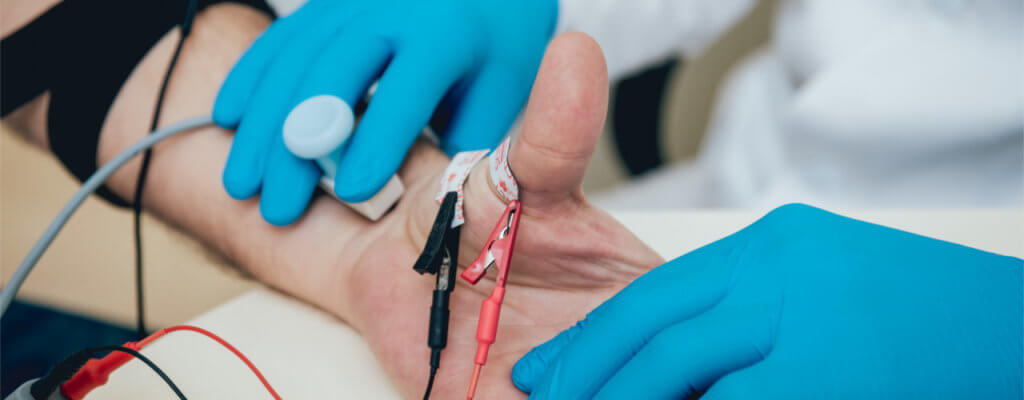
Electromyography (EMG) is a diagnostic procedure to assess the health of muscles and the nerve cells that control them (motor neurons). EMG results can reveal nerve dysfunction, muscle dysfunction or problems with nerve-to-muscle signal transmission.
Motor neurons transmit electrical signals that cause muscles to contract. An EMG uses tiny devices called electrodes to translate these signals into graphs, sounds or numerical values that are then interpreted by a specialist.
During a needle EMG, a needle electrode inserted directly into a muscle records the electrical activity in that muscle.
A nerve conduction study, another part of an EMG, uses electrode stickers applied to the skin (surface electrodes) to measure the speed and strength of signals traveling between two or more points.
Your doctor may order an EMG if you have signs or symptoms that may indicate a nerve or muscle disorder. Such symptoms may include:
EMG results are often necessary to help diagnose or rule out a number of conditions such as:
Food and medications
When you schedule your EMG, ask if you need to stop taking any prescription or over-the-counter medications before the exam. If you are taking a medication called Mestinon (pyridostigmine), you should specifically ask if this medication should be discontinued for the examination.
Bathing
Take a shower or bath shortly before your exam in order to remove oils from your skin. Don’t apply lotions or creams before the exam.
Other precautions
Before the procedure
You’ll likely be asked to change into a hospital gown for the procedure and lie down on an examination table. To prepare for the study, the neurologist or a technician places surface electrodes at various locations on your skin depending on where you’re experiencing symptoms. Or the neurologist may insert needle electrodes at different sites depending on your symptoms.
During the procedure
When the study is underway, the surface electrodes will at times transmit a tiny electrical current that you may feel as a twinge or spasm. The needle electrode may cause discomfort or pain that usually ends shortly after the needle is removed.
During the needle EMG, the neurologist will assess whether there is any spontaneous electrical activity when the muscle is at rest — activity that isn’t present in healthy muscle tissue — and the degree of activity when you slightly contract the muscle.
He or she will give you instructions on resting and contracting a muscle at appropriate times. Depending on what muscles and nerves the neurologist is examining, he or she may ask you to change positions during the exam.
If you’re concerned about discomfort or pain at any time during the exam, you may want to talk to the neurologist about taking a short break.
After the procedure
You may experience some temporary, minor bruising where the needle electrode was inserted into your muscle. This bruising should fade within several days. If it persists, contact your primary care doctor.
For more information, contact our physical therapist at the center of Casper, WY and Glenrock, WY.

Site Developed by Kalen Marketing Solutions